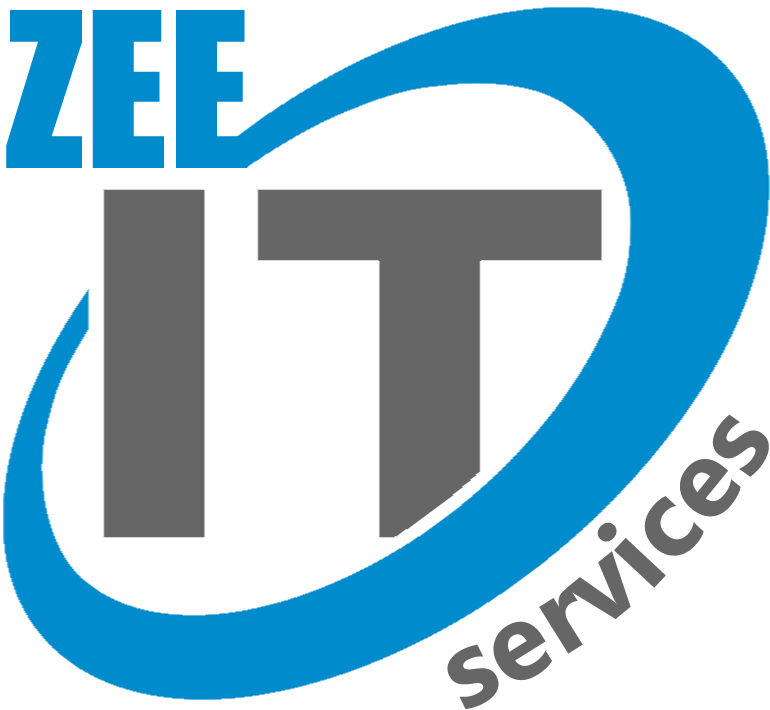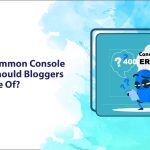
Jun 13, 2023 | Blogs
A well-designed website is no longer sufficient in today’s digital world to draw in and keep visitors. A crucial part of that online presence is a well-designed website that provides a seamless user experience. The success of a website can now be made or broken by the user experience. But how can you be sure that your website is optimized to offer the optimum user experience? Here is when the skills of the top SEO firm are useful. In this post, we’ll examine the different ways that the top SEO company may enhance UX on your website, resulting in higher traffic, greater engagement, and eventually improved conversion rates.
The Importance of User Experience
Before delving into the impact an SEO agency can have on user experience, let’s first understand why UX matters. The term “user experience” describes the entire impression a visitor has after using a website. It encompasses various aspects such as ease of navigation, page load speed, mobile-friendliness, content relevance, and more.
When users have a positive experience on your website, they are more likely to stay longer, engage with your content, and convert into customers. On the other hand, if your website provides a poor UX, visitors are likely to leave quickly, resulting in high bounce rates and lost opportunities.
Understanding SEO and User Experience
It’s crucial to know what SEO is in order to completely appreciate how SEO services can enhance user experience. The practice of optimizing a website to rank better in search engine results pages is known as SEO or search engine optimization. Moreover, To improve exposure and enhance organic traffic to a website, it comprises a variety of tactics and strategies.
While SEO focuses on improving a website’s visibility and search rankings, it is closely intertwined with user experience Websites that offer a good UX are given preference by search engines like Google. By aligning SEO and user experience goals, websites can enhance their visibility, attract more visitors, and achieve higher conversions.
How the Best SEO Agency Can Help Improve User Experience
Partnering with the best SEO agency can have a profound impact on your website’s UX. Furthermore, Let’s explore some key ways an SEO agency can help enhance your website’s user experience:
Conducting a Website Audit
To find any UX problems, a reputable SEO company will carry out a thorough website audit. During this audit, your website’s structure, navigation, page load time, mobile friendliness, and content quality will all be examined. In addition, The organization can create a unique plan to improve UX by determining areas that need development.
Optimizing Site Speed
User experience is critically dependent on how quickly a website loads. High bounce rates are a result of visitor frustration with slow-loading websites. An SEO company may increase the speed of your website by reducing the amount of code, optimizing the images, and utilizing caching methods. Additionally, Not only does a speedier website provide a better UX, but it also benefits search engine rankings.
Enhancing Website Navigation
Intuitive and user-friendly navigation is vital for a positive user experience. An SEO agency can help simplify your website’s navigation structure, ensuring visitors can easily find the information they’re seeking. Moreover, By optimizing menu structures, implementing breadcrumb trails, and improving internal linking, the agency ensures a seamless navigation experience for your users.
Implementing Mobile Optimization
The use of mobile devices has made having a website optimized for them necessary. Your website can be adaptable and adjust to multiple screen sizes with the help of an SEO service. This enables consumers to enjoy their time on your site whether they access it from a desktop, smartphone, or tablet.
Creating Engaging and Relevant Content
A great user experience is built around content. The development of engaging content that appeals to your target audience might be assisted by an SEO agency. The agency can increase the value and engagement of your content for users by conducting comprehensive keyword research, optimizing the structure of the material, and adding multimedia components.
Improving Website Accessibility
Website accessibility is essential for providing an inclusive user experience. An SEO agency can assist in optimizing your website to meet accessibility standards, ensuring it is usable by people with disabilities. This may involve adding alternative text to images, providing closed captions for videos, and making the site compatible with screen readers.
Key Benefits of Improving User Experience
Moreover, Improving user experience on your website offers a range of benefits:
Increased Website Visibility
Your website will be more visible to search engines and receive better rankings and organic traffic as a result of improving user experience. In addition, A website that is well-optimized and offers a satisfying UX will get more visitors and appear higher in search results.
Higher Conversion Rates
Higher conversion rates are closely correlated with a good user experience. When visitors have a seamless and enjoyable experience on your website, they are more likely to take the desired actions, such as making a purchase, filling out a form, or subscribing to a newsletter.
Improved Customer Satisfaction and Loyalty
User experience plays a significant role in customer satisfaction and loyalty. When users like their time on your website, they are more likely to come back later, tell their friends about it, and stay as devoted clients. Furthermore, By investing in UX improvements, you foster stronger relationships with your audience.
Enhanced Brand Reputation
A website that provides a stellar user experience reflects positively on your brand. Users perceive your brand as trustworthy, professional, and customer-oriented. On the other hand, a poor UX can damage your brand’s reputation and make users hesitant to engage with your business.
Strategies to Improve User Experience on Your Website
Furthermore, To improve user experience on your website, consider implementing the following strategies:
Conducting User Research and Analysis
Gain insights into your target audience’s preferences and behaviors through user research and analysis. Understand their needs, pain points, and expectations to tailor your website accordingly.
Implementing Responsive Web Design
Ensure your website is responsive and adjusts seamlessly to different devices and screen sizes. This guarantees a consistent user experience across various platforms.
Simplifying Navigation and Site Structure
Streamline the navigation and architecture of your website to make it simple to use and understand. To assist users in finding what they’re looking for fast, utilize clear labels, logical hierarchies, and concise menus.
Optimizing Page Loading Speed
Reduce bounce rates by speeding up the loading of your website. Compress images, minimize code, leverage browser caching, and use content delivery networks (CDNs) to improve performance.
Making Content Engaging and Easy to Read
Craft compelling and well-structured content that is easy to read and understand. Moreover, Use headings, bullet points, and visuals to break up text and make it more digestible.
Optimizing Call-to-Action Elements
Make your call-to-action (CTA) elements clear, visually appealing, and strategically placed. Encourage users to take the desired actions, such as signing up, purchasing, or contacting you.
Ensuring Mobile-Friendly Experience
Optimize your website for mobile devices by implementing responsive design, touch-friendly buttons, and streamlined mobile navigation. To ensure a seamless experience, test your website on many devices.
Optimizing for Voice Search
As voice assistants become more prevalent, make sure your content is optimized for voice search. Use natural language, answer common questions, and consider long-tail keywords that mirror voice search queries.
Incorporating Visual Elements
Visual elements, such as images, videos, and infographics, enhance user engagement and make your content more appealing. Use relevant visuals to support your message and break up text-heavy pages.
Ensuring Website Accessibility
Make your website accessible to users with disabilities. Follow accessibility guidelines, provide alternative text for images, use proper heading structures, and ensure compatibility with assistive technologies.
The Role of SEO Strategy in Enhancing User Experience
An effective SEO strategy is essential for enhancing the UX on your website. Moreover, Here’s how SEO and user experience intertwine:
Aligning SEO and User Experience Goals
A well-designed SEO strategy takes UX into account. By aligning SEO goals with user experience objectives, you create a website that satisfies both search engines and users.
Improving Website Ranking and Organic Traffic
Your website’s exposure and organic search ranks are enhanced by SEO strategies like keyword optimization, technical optimizations, and backlink creation. The whole user experience is improved when users can locate your website quickly and simply via search engines.
Utilizing Data and Analytics for Continuous Improvement
SEO agencies use data and analytics to monitor user behavior, track website performance, and identify areas for improvement. This data-driven approach ensures ongoing optimization for a better user experience.
Looking to enhance your website’s user experience? Look no further than ZEE IT Services, your professional SEO company. Our team of experts is skilled in optimizing websites to deliver a seamless and engaging user experience. From improving site speed and navigation to creating relevant and engaging content, we know how to captivate your audience and keep them coming back for more. With our strategic SEO approach, we’ll boost your website’s visibility, increase conversions, and leave a lasting impression on your visitors. Partner with ZEE IT Services today and unlock the true potential of your website. Success awaits!
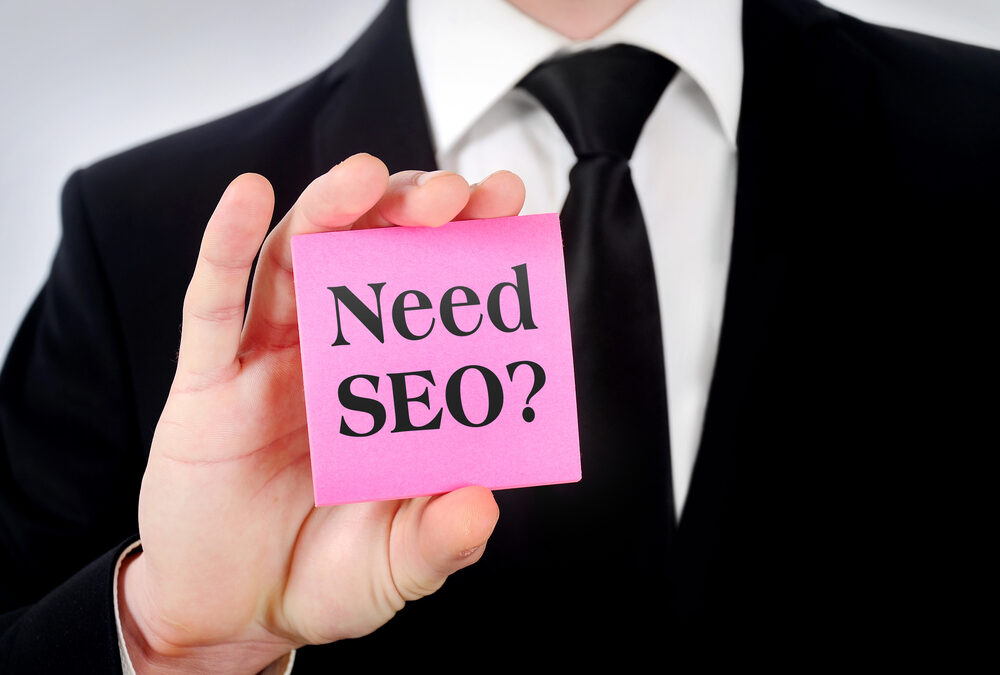
Jun 12, 2023 | Blogs
In the current digital era, successful firms need to have a strong online presence. An important factor in increasing a website’s visibility and generating organic traffic is search engine optimization (SEO). However, many businesses are unaware of the importance of SEO or lack the resources and expertise to implement effective strategies. As an SEO professional, it is essential to identify and approach these businesses to offer your services. Furthermore, This article will guide you on how to identify and approach businesses in need of SEO services and provide valuable insights on building relationships, overcoming objections, and delivering results.
Understanding the Need for SEO Services
It’s important to comprehend why organizations demand SEO help before finding those that need SEO services. To begin, list the advantages of SEO, such as better brand recognition, higher website ranks, targeted visitors, and more online presence. Moreover, Describe the ways in which SEO might assist businesses to draw in new clients and remain competitive in the digital sphere.
Identifying Businesses in Need of SEO Services
Researching Local Businesses:
Begin by conducting thorough research on local businesses within your target market. Look for websites that rank poorly in search engine results, have outdated designs, or lack optimized content. Additionally, These signs indicate that the business may benefit from SEO services.
Analyzing Competitors:
Analyze the online presence of your client’s competitors. Identify gaps or weaknesses in their SEO strategies, which can present an opportunity to approach these businesses and offer your expertise.
Utilizing SEO Tools:
Leverage SEO tools like SEMrush, Ahrefs, or Moz to identify websites with low domain authority, poor keyword rankings, or inadequate backlink profiles. In addition, These indicators suggest that businesses might require SEO assistance.
Monitoring Social Media and Forums:
Keep an eye on social media platforms and industry-specific forums to identify businesses that express concerns about their online visibility, website traffic, or lead generation. Moreover, Engage in conversations and provide valuable insights to establish yourself as an SEO expert.
Approaching Businesses for SEO Services
Personalized Outreach:
Craft personalized outreach messages to introduce yourself and explain how your SEO services can benefit your business. Additionally, Address their pain points and offer a brief overview of your expertise and achievements.
Networking Events and Conferences:
Attend networking events and conferences relevant to your industry to meet business owners face-to-face. Establishing personal connections can go a long way in building trust and securing potential clients.
Cold Calling and Email Marketing:
Though considered traditional methods, cold calling and email marketing can still be effective in reaching out to businesses. Moreover, Ensure your messages are concise, compelling, and tailored to their specific needs.
Leveraging LinkedIn:
Utilize LinkedIn’s advanced search filters to find businesses in your target industry or location. Furthermore, Connect with decision-makers and send personalized messages highlighting the benefits of SEO services.
Building a Strong SEO Proposal
Initial Website Audit:
To find areas that need work, perform an initial website audit. Give a concise and understandable overview of the technical and on-page SEO difficulties.
Targeted Keyword Research:
Perform Comprehensive keyword research to identify high-value keywords relevant to the business’s industry. Moreover, Explain how optimizing for these keywords can drive targeted traffic and improve conversions.
Competitor Analysis:
Analyze the SEO strategies and rankings of the business’s competitors. In addition, Showcase opportunities to outrank competitors and gain a competitive edge in the market.
Customized Strategy:
Develop a tailored SEO strategy for each client, focusing on their unique goals and objectives. Break down the plan into actionable steps and provide a timeline for implementation.
Demonstrating Expertise and Value
Case Studies and Testimonials:
Showcase previous successes through case studies and testimonials. In addition, Highlight how your SEO strategies have helped businesses achieve significant improvements in search rankings and website traffic.
Industry Thought Leadership:
Create valuable high-quality content such as blog posts, videos, or whitepapers that demonstrate your expertise in the SEO field. Share these resources on your website, social media platforms, and also industry-specific forums.
Free SEO Audits or Consultations:
Offer free SEO audits or consultations to potential clients. Use these opportunities to identify their pain points, educate them on SEO best practices, and present your services as the solution.
Track Record of Results:
Emphasize the measurable results you have achieved for previous clients. Showcase improvements in keyword rankings, organic traffic, conversion rates, and return on investment (ROI).
Nurturing Relationships with Potential Clients
Regular Communication:
Maintain regular communication with potential clients through email newsletters, industry updates, or personalized check-ins. Additionally, Keep them informed about the latest SEO trends and how they can benefit their business.
Personalized Follow-ups:
Follow up with potential clients after initial conversations or consultations. Address Reinforce the value of your services and respond to any queries or worries clients may have.
Provide Valuable Insights:
Share industry-specific tips and insights with potential clients to establish yourself as a trusted authority. Moreover, Offer free resources such as e-books or guides to further educate them on the benefits of SEO.
Offer a Trial Period:
Consider offering a trial period or a smaller-scale project to showcase the value and effectiveness of your SEO services. In addition, This can help build trust and convert potential clients into long-term customers.
Overcoming Objections and Concerns
Cost Concerns:
Address concerns about the cost of SEO services by highlighting the long-term benefits and ROI potential. Emphasize the value of investing in SEO as a strategic business decision.
Timeframe Expectations:
Manage expectations regarding the timeframe for achieving SEO results. Moreover, Explain that SEO is a long-term strategy that requires continuous efforts and improvements.
Transparent Reporting:
Provide regular and transparent reporting on the progress of their SEO campaigns. Additionally, Demonstrate the key performance indicators (KPIs) you track and how these metrics align with their business goals.
Addressing Competition:
Assure potential clients that your SEO strategies are designed to outperform competitors and help them gain a significant advantage in the market. Moreover, Showcase your understanding of their industry landscape.
Providing Ongoing Support and Reporting
Regular Updates:
Maintain regular communication with clients and provide updates on the progress of their SEO campaigns. Inform them about algorithm updates, industry trends, and also any necessary adjustments to the strategy.
Performance Tracking:
Continuously track and report on the performance of the implemented SEO strategies. Moreover, Monitor keyword rankings, organic traffic, conversion rates, and other relevant metrics to measure success.
Website Maintenance and Optimization:
Offer ongoing website maintenance and optimization services to ensure the client’s website remains SEO-friendly. Furthermore, Regularly monitor and fix technical issues, improve site speed, and update content.
Adaptation to Algorithm Changes:
Stay updated with search engine algorithm changes and adjust SEO strategies accordingly. Proactively communicate these changes to clients and also explain how they may impact their online visibility.
Measuring and Communicating Results
Comprehensive Reporting:
Provide detailed reports that showcase the tangible results achieved through your SEO efforts. Include visual representations of key metrics and also explain the impact on the client’s business growth.
Conversion Tracking:
Implement conversions tracking to measure the effectiveness of SEO in driving desired actions, such as form submissions, purchases, or lead generation. Moreover, Share insights on how SEO contributes to increased conversions.
ROI Analysis:
Conduct an ROI analysis to demonstrate the financial benefits of investing in SEO services. Compare the client’s investment with the revenue generated or cost savings achieved through improved organic visibility.
Continuous Improvement:
Continuously analyze data and make data-driven optimizations to further improve SEO performance. Proactively share recommendations for enhancements based on the latest industry trends.
Key Benefits of Hiring SEO Services
Increased Online Visibility:
Explain how SEO services can improve the client’s website’s visibility in search engine results, leading to higher organic traffic and exposure to potential customers.
Targeted Traffic:
Highlight the ability of SEO to attract relevant and highly targeted traffic to the client’s website. Furthermore, Showcase the importance of quality traffic in driving conversions and generating leads.
Improved User Experience:
Emphasize the role of SEO in optimizing the client’s website for a seamless user experience. Explain how a well-structured and user-friendly website leads to increased engagement and higher rankings.
Long-Term Strategy:
Communicate the long-term nature of SEO and its ability to provide sustainable results. Showcase how continuous efforts and optimization can ensure the client’s online success in the ever-evolving digital landscape.
Pricing and Packages
Customized Packages:
Explain that your SEO services are tailored to each client’s specific needs and goals. Moreover, Provide pricing options based on the scope of work, target keywords, and the level of ongoing support required.
Transparent Pricing Structure:
Emphasize your transparent pricing structure, ensuring clients understand how their investment translates into the services and deliverables they will receive.
Value-Added Services:
Describe any additional services included in your packages, such as content creation, website optimization, or social media management. Highlight the value these services bring to the overall SEO strategy.
ROI Guarantee:
Offer a satisfaction guarantee or assurance of delivering a positive return on investment. Furthermore, Communicate your commitment to achieving tangible results and the steps you will take to address any concerns.
Staying Updated with SEO Trends
Continuous Learning:
Emphasize your commitment to staying updated with the latest SEO trends, algorithm changes, and industry best practices. Moreover, Highlight how this ongoing education allows you to provide cutting-edge strategies to clients.
Industry Resources:
Share reputable industry resources, blogs, and forums that clients can refer to for staying informed about SEO trends. Offer curated content to help them understand the evolving digital landscape.
Proactive Strategy Adjustments:
Assure clients that you proactively adapt SEO strategies based on the changing search landscape. Additionally, Explain how this proactive approach ensures their website remains competitive and future-proof.
Training and Workshops:
Offer training sessions or workshops for clients to enhance their understanding of SEO and empower them to make informed decisions. Position yourself as a trusted advisor invested in their long-term success.
Looking to improve your online visibility and climb the search engine rankings? The only choice is Zee IT Services. We specialize in bringing organic traffic to your website, boosting visibility, and enhancing your online reputation as a top supplier of excellent SEO solutions. To keep your company one step ahead of the competition, our team of SEO specialists uses cutting-edge methodologies, keyword analysis, and optimization procedures. We customize our services to match your particular needs, including everything from on-page optimization to link building and content production. You can rely on Zee IT Services to maximize the potential of your internet presence and propel your company to success. Take the first step towards SEO greatness by getting in touch with us right away for a customized consultation!
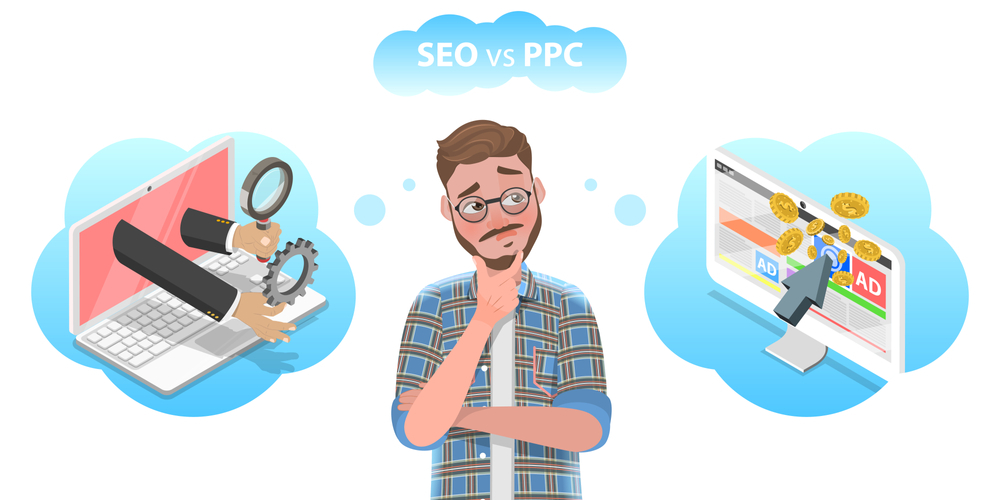
May 31, 2023 | Blogs
In today’s digital landscape, businesses strive to increase their online visibility and attract more customers. Two primary strategies for achieving these goals are search engine optimization (SEO) and paid advertising. Both approaches have their merits and can be effective in driving traffic and conversions. However, determining which one is the best investment for your business requires careful consideration. In this article, we will delve into the ongoing debate of SEO vs paid advertising and provide insights to help you make an informed decision.
Difference between SEO and Paid advertisement:
Before we dive deeper into the discussion, let’s briefly clarify the difference between SEO and paid advertising. SEO refers to the practice of optimizing your website and its content to improve its visibility in search engine results organically. On the other hand, paid advertising involves paying for ad placements on search engine results pages (SERPs) or other online platforms to increase visibility and drive targeted traffic to your website.
The Benefits of SEO
SEO offers several advantages that make it an attractive long-term investment for businesses:
Sustainable Organic Traffic:
By implementing effective SEO strategies, your website can rank higher in search results and attract organic traffic. Unlike paid advertising, which requires continuous investment to maintain visibility, SEO can deliver sustainable results over time.
Cost-Effective:
While SEO may require an upfront investment in terms of time and resources, it can be more cost-effective in the long run compared to paid advertising. Once you achieve higher rankings, the organic traffic you receive doesn’t require ongoing payments.
Credibility and Trust:
Ranking high in organic search results installs a sense of credibility and trust among users. Many people consider organic listings to be more reliable and trustworthy than paid ads.
The Power of Paid Advertising
Paid advertising also offers compelling advantages that can make it a worthwhile investment for businesses:
Immediate Visibility:
Unlike SEO, which requires time to build domain authority and climb search rankings, paid advertising provides instant visibility. With well-crafted ads and effective targeting, you can quickly reach your target audience and generate immediate results.
Control and Flexibility:
Platforms for paid advertising give you fine-grained control over your campaigns. You can tailor your campaigns for optimal performance by setting specific budgets, focusing on particular demographics, and changing your ad messaging in real time.
Enhanced Brand Exposure:
Paid advertising can help increase brand exposure, especially for new businesses or those entering competitive markets. By appearing prominently in search results or on relevant websites, you can quickly raise awareness and attract potential customers.
SEO vs Paid Advertising: Which is the Best Investment?
When it comes to determining the best investment between SEO and paid advertising, there is no one-size-fits-all answer. The choice depends on various factors such as your business goals, budget, timeline, and target audience. Let’s compare the two strategies across different dimensions to help you make an informed decision.
Cost-Effectiveness
SEO:
While SEO requires upfront investment in terms of time and resources, it can be more cost-effective in the long run. Once you achieve higher rankings, the organic traffic you receive doesn’t require ongoing payments. However, SEO efforts can be time-consuming and may take months to yield significant results.
Paid Advertising:
Paid advertising provides immediate visibility but requires continuous investment to maintain ad placements. You need to allocate a budget for your campaigns, and costs can escalate if competition for keywords is high. However, paid advertising can deliver quick results, making it suitable for short-term marketing goals.
Targeting and Reach
SEO:
With SEO, you can target a broader audience by optimizing your website and content for relevant keywords. However, the reach may be limited initially, especially if your website is new or lacks authority. SEO is a long-term strategy that gradually improves your visibility and reach over time.
Paid Advertising:
Paid advertising offers precise targeting options to reach your ideal audience. You can specify demographics, interests, and even target geographic locations to ensure your ads are shown to the most relevant users. This level of targeting allows you to maximize your reach and focus on high-potential customers.
Long-Term vs Short-Term Results
SEO:
SEO is a long-term investment that requires patience and consistent effort. It takes time to build authority, optimize your website, and earn higher rankings. However, once you achieve those rankings, you can enjoy sustained organic traffic and visibility, making it a valuable long-term strategy.
Paid Advertising:
Paid advertising produces immediate traffic and conversions and offers quick results. However, visibility and traffic will decrease after you stop spending money on advertisements. Paid advertisements work well for time-sensitive promotions, new product launches, and short-term campaigns.
Credibility and Trust
SEO:
Ranking high in organic search results establishes credibility and trust among users. Many people perceive organic listings as more reliable and trustworthy than paid ads. This credibility can positively impact user behaviour and lead to higher click-through rates and conversions.
Paid Advertising:
While paid ads can be effective in generating traffic, some users may view them with scepticism. They might perceive paid ads as biased or less trustworthy compared to organic search results. However, well-crafted ads with relevant messaging and compelling offers can overcome these concerns and still drive conversions.
Measurability and Data Analysis
SEO:
Measuring the exact impact of SEO efforts can be challenging due to the complex nature of search engine algorithms. However, various tools and analytics platforms provide insights into keyword rankings, organic traffic, and user behavior on your website. These data points can guide your SEO strategies and help you optimize for better results.
Paid Advertising:
Paid advertising offers robust tracking and data analysis capabilities. You can measure key metrics such as impressions, clicks, conversions, and return on ad spend (ROAS). This data allows you to fine-tune your campaigns, optimize for better performance, and maximize your advertising budget.
Collaboration between SEO and Paid Advertising
Instead of viewing SEO and paid advertising as competing strategies, businesses can leverage their synergy for maximum impact. By combining the two approaches, you can enjoy the benefits of both long-term organic visibility and immediate targeted traffic. Here are some ways to integrate SEO and paid advertising:
Keyword Research:
Use SEO keyword research to identify high-value keywords for your paid advertising campaigns. This synergy ensures that your paid ads are targeting relevant search queries with high search volume.
Landing Page Optimization:
Apply SEO principles to optimize your landing pages for both organic and paid traffic. This includes creating valuable content, optimizing meta tags, and improving user experience to maximize conversions.
Retargeting:
Utilize paid advertising’s retargeting capabilities to re-engage users who have previously visited your website through organic search. This helps reinforce your brand, drive conversions, and improve overall marketing effectiveness.
Content Promotion:
Combine SEO-focused content creation with paid advertising to amplify the reach of your valuable content. Paid ads can drive initial traffic to your content, while SEO ensures its long-term visibility and organic traffic growth.
Boost your online presence and skyrocket your rankings with ZEE IT Services‘ cutting-edge SEO solutions. Our team of SEO experts is dedicated to driving organic traffic to your website and ensuring that your business stands out from the competition. From comprehensive keyword research and on-page optimization to authoritative link building and strategic content creation, we have the tools and expertise to catapult your website to the top of search engine results. Take the first step towards SEO success and unlock the full potential of your online business with ZEE IT Services. Contact us today at +1 (224) 999-6997.

May 26, 2023 | Blogs
Do you struggle to make your website more visible in search engines? Do you want to enhance your website’s appearance on search results? If yes, then you need to level up your website with rich snippets.
Moreover, In this article, we will explain what rich snippets are and how they can benefit your website’s SEO. We will also provide you with tips on how to implement rich snippets on your website and answer some frequently asked questions.
What are Rich Snippets?
Many people get confused when differentiating between featured snippets and rich snippets. Rich snippets are a kind of structured data markup that helps search engines comprehend the material on your page. They enable you to offer extra details about the content on your website, such as reviews, ratings, prices, and more. Users can more easily identify the most pertinent and helpful results because of the additional information that is displayed on the search engine results page (SERP).
Rich snippets are powered by Schema.org, a collaborative project between Google, Bing, Yahoo, and Yandex. Schema.org also provides a set of standardized tags that webmasters can use to mark up their website’s content.
Why are Rich Snippets Important for SEO?
Rich snippets can increase your website’s exposure and click-through rates (CTR) in search engine results pages (SERPs). Rich snippets can assist potential visitors in making more educated choices before visiting your website by providing more details about the content. Your website may receive more high-quality visitors as a result, which may raise position in search engine rankings.
Types of Rich Snippets
Furthermore, There are several types of rich snippets that you can implement on your website, depending on the type of content you have.
Reviews
Popular rich snippets for websites that sell goods or services include reviews. Star ratings, the total number of reviews, and the reviewer’s name can all be found in the reviews. Moreover, This kind of rich snippet can make your website stand out on search engine results pages and entice more clicks from prospective clients.
Recipes
If you have a food blog or website that offers recipes, implementing recipe-rich snippets can help your content stand out in SERPs. Recipe snippets can include the recipe name, photo, rating, and cooking time.
Events
Event snippets provide information about upcoming events, such as the event name, date, time, and location. Furthermore, If you’re hosting an event, implementing event-rich snippets can help potential attendees find your event and register for it.
Products
Product snippets give details on the products that customers can buy from your website. Product names, prices, availability, and reviews can all be found in product snippets. Before making a purchase, potential clients can benefit from this kind of rich information.
Benefits of Rich Snippets for SEO
Adding rich snippets to your website can provide numerous benefits for your SEO efforts, such as:
Increased Click-Through Rates (CTR)
Rich snippets give readers more details about the content on your website, which can make it more appealing and attractive. This could raise the click-through rate (CTR) for your website on search engine results pages.
Improved Visibility on Search Engines
Rich snippets can increase visibility of your website on search engines by giving more thorough and relevant information about your content. Furthermore, By doing this, you may make your website stand out from the crowd and increase traffic.
Enhanced User Experience
By providing more information about your website’s content, rich snippets can enhance the user experience and help users find the information they need more quickly and easily.
How to Implement Rich Snippets on Your Website
Implementing rich snippets on your website is relatively easy, and it doesn’t require any coding skills. Additionally, Here are the steps to follow:
Choose the Rich Snippet Type
The first step is to decide which kind of rich snippet best complements the material on your website. Rich snippets come in a variety of forms, including those we’ve already covered, like reviews, ratings, events, items, and recipes.
Schema Markup
After deciding on the sort of rich snippet, you must add the proper markup to the text of your website. A way of structured data called schema markup, helps search engines in understanding the main intent of the content of your website easily. Furthermore, By using schema markup, you may give search engines more details about the content of your website, which may lead to rich snippets being displayed in SERPs.
You can use a plugin or add the code directly to the HTML of your website to apply schema markup. Depending on the type of material you have, there are many forms of schema markup that you can employ.
Test Your Rich Snippets
You should test your rich snippets using Google’s Structured Data Testing Tool after adding the markup to your text. Additionally, This will assist you in making certain that your rich snippets are applied properly and will show up on search engine results pages.
Best Practices for Rich Snippets
Rich snippets implementation is simply the first step in the process. There are a few best practices to remember to make sure that your rich snippets are successful.
Accurate and Descriptive Content
Your website’s high-quality content should be appropriately reflected in your rich snippets. moreover, Make sure the data you supply for your rich snippets corresponds to the data on your website. This will make it more likely that visitors to your website will grasp what it offers.
Avoid Keyword Stuffing
While it’s important to do comprehensive keyword research before including keywords in your rich snippets, it’s also important to avoid keyword stuffing. Overusing keywords in your rich snippets can result in a penalty from search engines and can harm your website’s ranking in search results.
Keep it Simple
Your rich snippets should be easy to read and understand. Avoid using complex language or technical jargon that potential users may not be familiar with. In addition, Keep your rich snippets concise and to the point.
Consistency Across Pages
If you have multiple pages on your website, it’s important to ensure that your rich snippets are consistent across all pages. This will help ensure that potential users have a clear understanding of what your website offers, regardless of which page they land on.
Looking to boost your website’s visibility on search engines? Look no further than ZEE IT Services. With our help, you can enhance your website’s appearance on search results pages, increase click-through rates, and ultimately drive more traffic to your site. Our expert team will work with you to implement rich snippets that are tailored to your specific business needs, so you can stay ahead of the competition and achieve your online marketing goals. Contact us today at 048-3767951-52 to learn more about how we can help you level up your website with rich snippets!
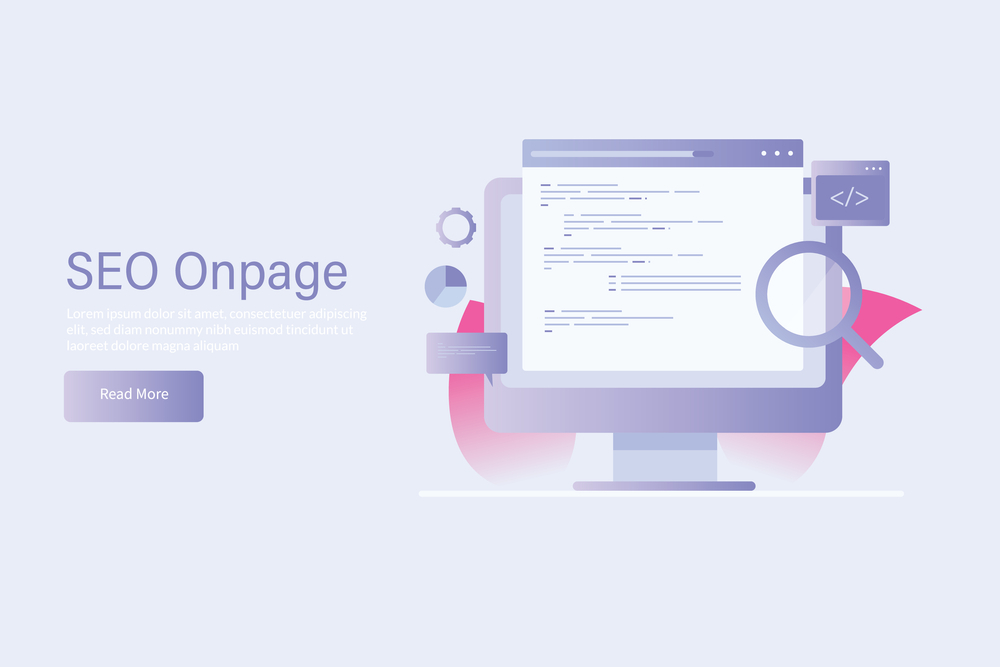
May 24, 2023 | Blogs
To keep ahead of the competition in today’s digital world, a strong online presence is crucial. It’s crucial to optimize a website for search engines to appear higher on search engine results pages (SERPs) if a business wants to succeed online. Website owners should keep a few things in mind to improve the on-page SEO of their websites because it is an essential component of the optimization process. Additionally, we’ll cover the three on-page content requirements for SEO success in this post, which can support a higher SERP ranking for your website.
Definition of on-page SEO
On-page SEO, sometimes referred to as on-site SEO, is the process of optimizing specific web pages to raise their search engine positioning and attract more relevant traffic from search engines. This includes optimizing both the content and HTML source code of a page, as well as ensuring that the page meets the criteria that search engines look for when ranking pages.
Importance of on-page SEO for search engine ranking
On-page SEO is critical for search engine ranking success because it provides search engines with the information they need to understand what a particular page is about and how relevant it is to users. Without effective on-page optimisation, search engines could find it challenging to understand the subject matter of a page and might not give it the high ranking it merits. On-page SEO also contributes to a better user experience, which can enhance engagement and boost conversion rates.
Why content is king in on-page SEO
Content is king in on-page SEO because it is the most important factor that search engines use to determine the relevance and quality of a particular page. Without high-quality, relevant content, a page is unlikely to rank well in search engine results pages (SERPs) or attract relevant traffic. To achieve on-page SEO success, it’s important to focus on creating high-quality content that is optimized for both users and search engines.
Content Relevance and Quality
The quality and relevancy of the content are two of the most crucial elements in on-page SEO success. This means that in order to draw in visitors and keep them on a page, the information needs to be both high quality and pertinent to the subject at hand. Understanding user intent, performing comprehensive keyword research, and producing informative and interesting content are crucial in order to accomplish this.
Understanding user intent
For content to be relevant and of good quality, it is imperative to understand user intent. This means that it’s critical to comprehend both the content and the intent of a user’s search when they enter a specific query into a search engine. Additionally, by comprehending user intent, material that satisfies user wants and gives them the information they seek can be produced.
Keyword research
Keyword research is an essential part of on-page SEO success because it helps to identify the words and phrases that users are using to search for information related to a particular topic. So, By conducting keyword research, it’s possible to identify high-volume, low-competition keywords that can be used to optimize on-page content and attract more relevant traffic.
Importance of quality content
In on-page SEO, the quality of your content is also quite important. Backlinks are more likely to be attracted by high-quality content, which can improve your search engine rating. You should concentrate on offering value to your target audience when writing content.Moreover, Your writing should be interesting, educational, and simple to read.
Content length and structure
On-page SEO is also influenced by the structure and length of the content. Short-form material typically does worse than long-form content in search engine rankings. You should aim for at least 1000 words while writing content. Your text should also be well-organized, with distinct headings and subheadings.
Use of visuals
The use of visuals such as images, videos, and infographics can help improve user engagement and retention. Moreover, Visuals help break up long blocks of text and make the content more appealing to users.
On-page Optimization Techniques
On-page optimization techniques refer to the optimization of website structure and elements to improve its ranking in SERPs. Moreover, Here are some essential on-page optimization techniques.
Title tags and meta descriptions
For on-page optimization to be successful, title tags and meta descriptions are essential. They are the first things a user sees on search engine result pages (SERPs) and can influence their decision to click through to your website. Furthermore, It’s crucial to use relevant keywords in your title tags and meta descriptions to increase the chances of ranking for those keywords.
Header tags (H1, H2, H3)
Header tags are HTML elements that indicate the hierarchy of your content. Your page’s main heading should be in the H1 tag, and subheadings can be in the H2 or H3 tags. Use these tags to structure your content and make it more scannable for users and search engines.
URL structure
The URL structure is another on-page optimization factor that can impact your search engine rankings. Use URLs that are detailed, keyword-rich, and accurately reflect the page’s content.
Internal linking
The act of linking to other pages on your website is known as internal linking. This helps users navigate your site and provides additional context to search engines about the topic of your content.
Use of schema markup
Schema markup is a type of microdata that provides additional information about your content to search engines. This can include information about your business, products, or services, and can enhance the appearance of your search engine results.
Mobile Optimization
With more users accessing the internet on mobile devices, mobile optimization has become a crucial on-page optimization factor. Make sure your website is mobile-friendly and that the material is simple to access on mobile devices.
User Experience (UX) Factors
In addition to on-page optimization techniques, user experience (UX) factors also play a role in search engine rankings. User experience factors refer to the elements of your website that impact how users interact with your site. A website that provides a good user experience is more likely to rank well in search engines. Furthermore, there are several factors of UX:
Site speed and page loading time
Site speed and page loading time are important factors that can affect user experience. Websites that load quickly are more likely to keep users engaged and lead to higher search engine rankings.
Navigation and site structure
Navigation and site structure should be intuitive and easy to use. A clear and organized site structure can help users find what they are looking for quickly and easily.
Readability and font style
Readability and font style are also important factors in on-page optimization. Websites that use easy-to-read fonts and have a good balance between text and white space can improve user experience.
Accessibility
Accessibility is another critical factor in on-page optimization. Websites that are accessible to all users, including those with disabilities, can improve user experience and lead to higher search engine rankings.
CTA placement
CTA placement is also important for on-page optimization. Placing clear and prominent calls to action can improve user experience and lead to higher conversion rates.
Importance of Analytics and Testing
Analytics and testing are critical in on-page SEO. You need to monitor your website’s performance to identify areas for improvement.
Importance of monitoring website performance
For on-page optimisation, keeping an eye on website performance is essential. To find areas for improvement, it’s critical to monitor data like page visits, bounce rate, and conversion rate.
Use of Google Analytics
A strong tool for monitoring and analyzing website performance is Google Analytics. It can offer insightful information about user behavior and assist you in making defensible choices regarding on-page optimisation.
A/B testing and optimization
Another crucial method for enhancing website performance is A/B testing and optimisation. You can find the best on-page optimisation techniques by testing many iterations of your website.
Identifying and fixing common on-page SEO issues
Identifying and fixing common on-page SEO issues like duplicate content, missing alt tags and broken links is also important for on-page optimization. Addressing these issues can improve user experience and lead to higher search engine rankings.
If you are stuck in the SEO of your website and you don’t know how to deal with it then no worries leave your burden on ZEE IT Services which is an expert SEO services provider company. Our expert team works collaboratively with you and uses different tools to make your website SEO optimized and increase the chances of being ranked higher in search engine results (SERPs). Our team of experienced professionals has a deep understanding of the latest SEO trends and techniques, ensuring that you’ll always be ahead of the game. Furthermore, Contact ZEE IT Services today +1 (224) 999-6997 and start optimizing your website for SEO success!
Page 10 of 19« First«...89101112...»Last »

